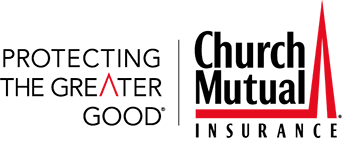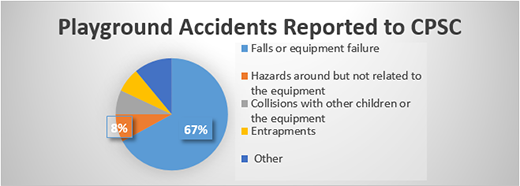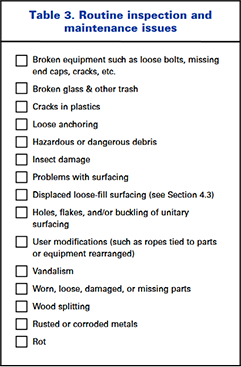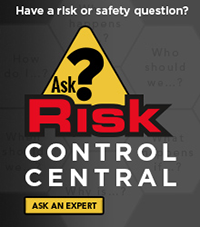Playground safety and maintenance
According to the U.S. Consumer Product Safety Commission there are more than 200,000 children injured on America's playgrounds each year. Approximately 75% of these accidents are caused by falls, equipment failure, or nearby hazards. Many of these accidents could have been prevented by implementing a playground safety program.
Source: United States Consumer Product Safety Commission
The S.A.F.E. program created by the National Program for Playground Safety can be used as a blueprint to help prevent these injuries on your playground.
Supervision
Trained and equipped supervisors should always be present to prevent accidents and improve overall safety. Follow these supervision guidelines:
Child to Supervisor Ratio:
- Always have a minimum of two adult supervisors on duty.
- For groups larger than 20, add one supervisor for every 20 additional children.
- Provide additional supervision as necessary based on the age and special needs of children.
Supervisor Training Program:
- Set ground rules such as "no cell phones" and designate supervisor zones to ensure maximum coverage.
- Familiarize supervisors with your first aid kit and communication tools available.
- Offer structured training such as the National Program for Playground Safety courses.
Supervisor Tools:
- Draw attention to supervisors by providing fluorescent vests and whistles.
- Keep a First Aid Kit stocked and accessible.
- Establish communication techniques between supervisors and consider the use of two-way radios.
Age-appropriate Design
Equipment Design:
Read the manufacturer's guidelines to designate equipment for children by age group. Doing this will help with the following:
- Prevent children from climbing outside of the structure and on supporting structures.
- Have the correct guardrail height.
- Playgrounds should be built for two age groups: 2-5 and 5-12
Signage and Labeling:
All equipment should have signage consistent with the manufacturer's guidelines. This will help with the following:
- Provide supervisors with knowledge of the equipment.
- Designate areas according to age group.
Equipment NOT Recommended by the Public Playground Safety Handbook includes:
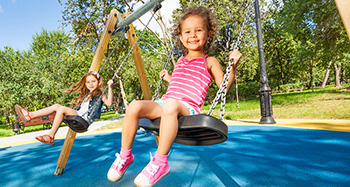
- Trampolines
- Rope swings
- Heavy metal swings
- Multiple occupancy swings
- Unsecured climbing ropes
- Swinging gates
- Giant strides
Fall Surfacing
Fall surfacing is a critical element of playground safety. Evaluate your playground's fall surfacing to prevent falls which is the most reported playground accident.
Approved/Unapproved Surfaces by the Consumer Product Safety Commission
APPROVED: Wood mulch (not CCA-Treated), wood chips, shredded/recycled rubber mulch, sand, and pea gravel.
UNAPPROVED: Asphalt, cement, concrete, dirt, CCA treated wood mulch, and grass
Footings and Foreign Objects:
- All concrete footings need to be properly buried under fill.
- Verify all foreign objects have been removed from loose fill surfacing materials.
Minimum Compressed Loose Fill:
With falls representing 44% of all playground injuries, it is also important to consider the depth of loose fill based on the height of your equipment. Check regularly that levels meet minimum surfacing depth guidelines. Please see the reference guide below from the Public Playground Safety Handbook.
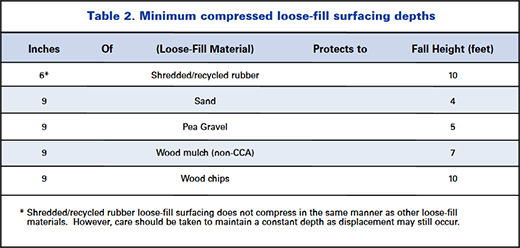
Source: United States Consumer Product Safety Commission
Equipment Maintenance
Routine Inspections:
Inspections need to happen on a routine basis. Every supervisor and building maintenance member should be trained on how to inspect the equipment and identify hazards. Please reference the checklist to the right from the Public Playground Safety Handbook.
Recordkeeping:
It is important to maintain records of all maintenance inspections, repairs, checklists, accident reports and the manufactures maintenance instructions. This will help identify any potential hazards that need corrective action.
Repairs:
All repairs need to be completed following the manufacturer's guidelines. It is recommended to consult with the manufacturer in order to establish a routine maintenance schedule. This should not replace routine inspections done by supervisors and maintenance staff.
After reviewing the S.A.F.E factors, use the Playground Safety Report Card from the National Program for Playground Safety to assess your playground safety practices. There, you will find many helpful safety tips and explanations of risks about playgrounds. An additional way to test your playgrounds safety is to have it inspected by Certified Playground Safety Inspector. Check the CPSI Registry for a certified inspector near you.
